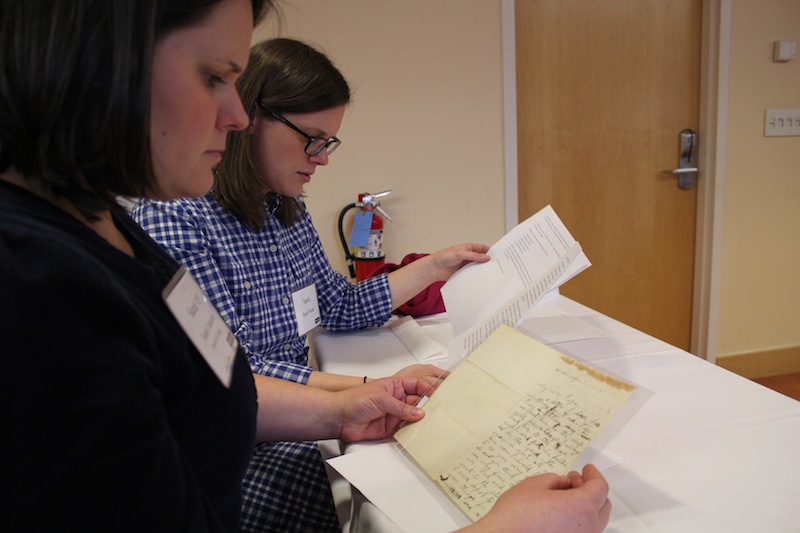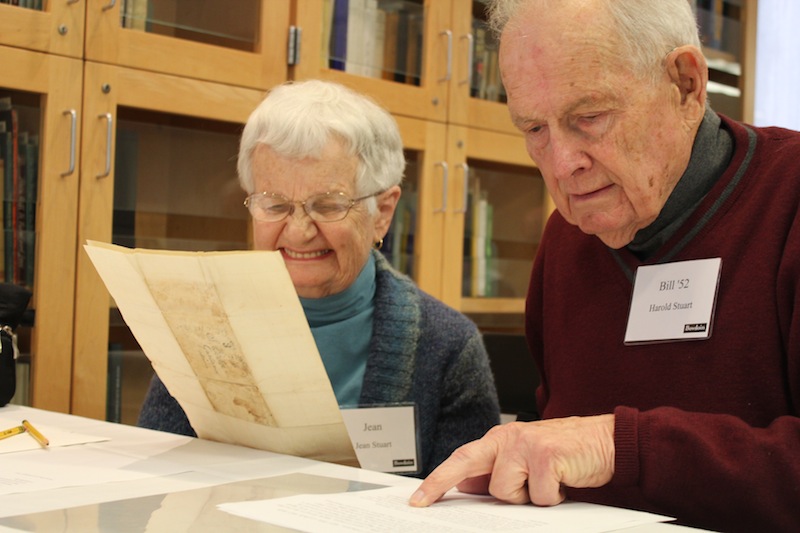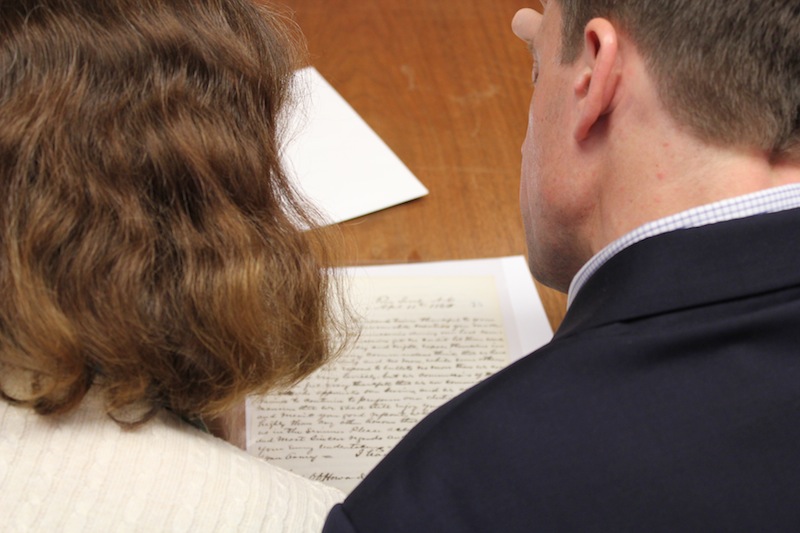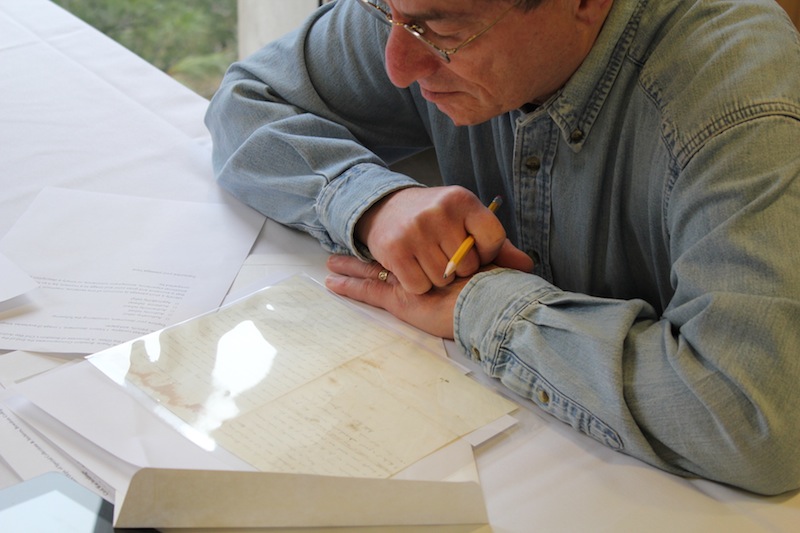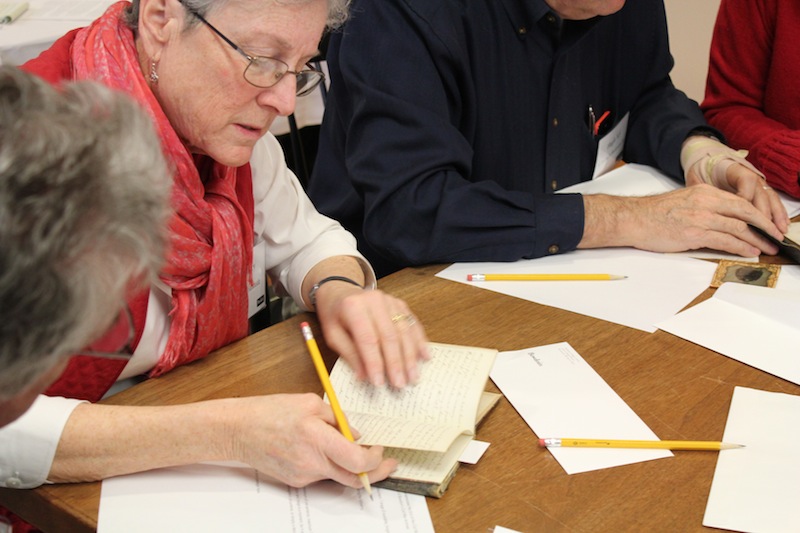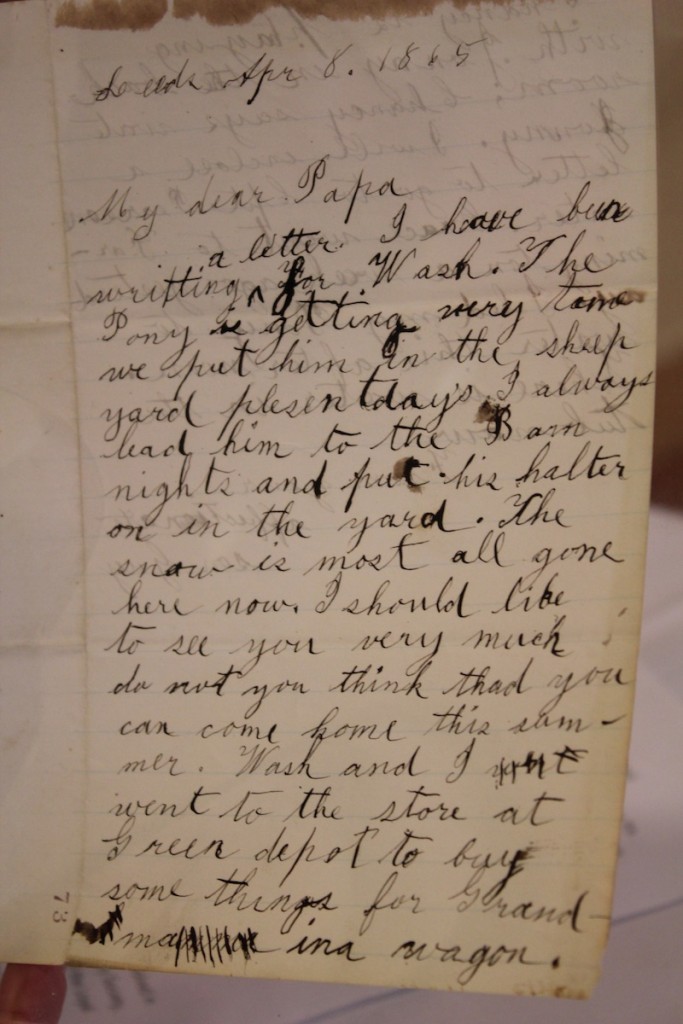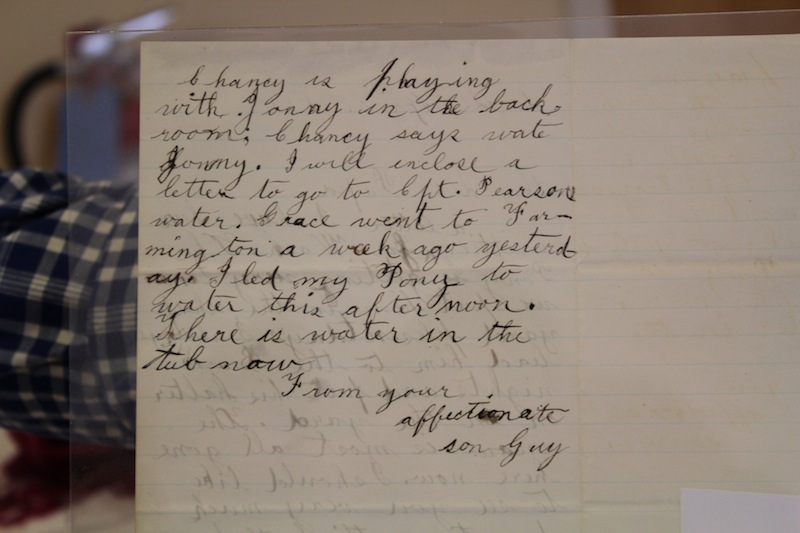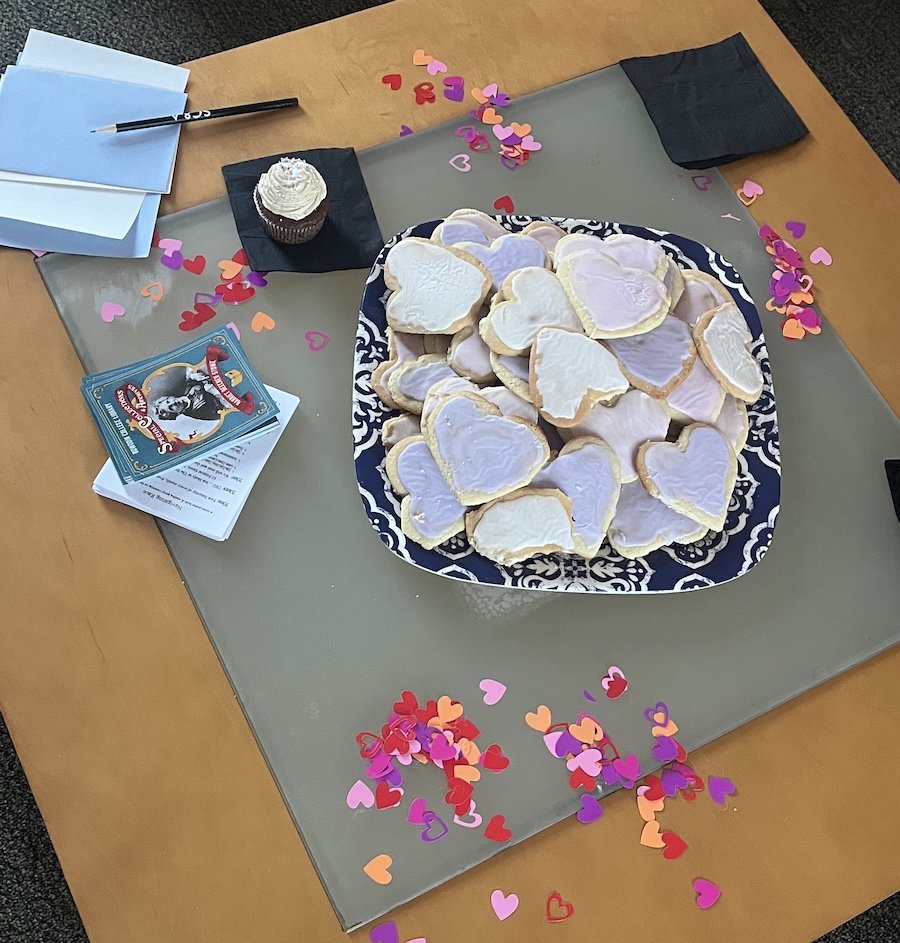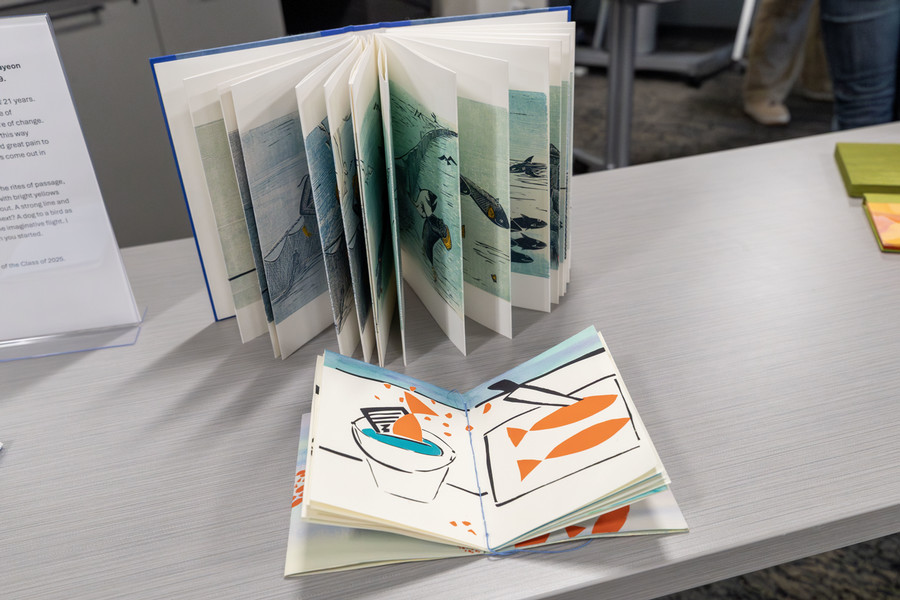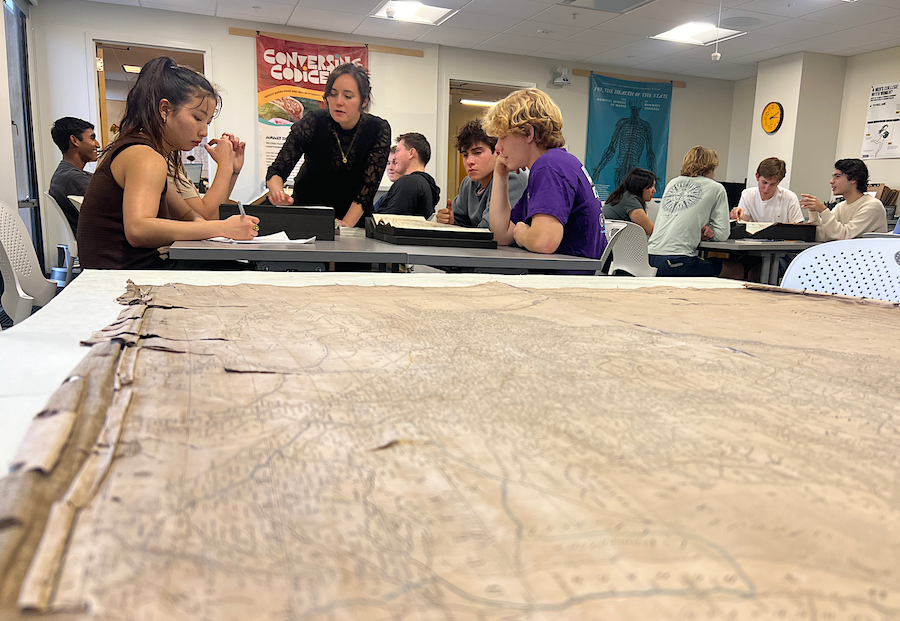From Behind the Glass: A Showcase of Bowdoin's Civil War
By Rebecca Goldfine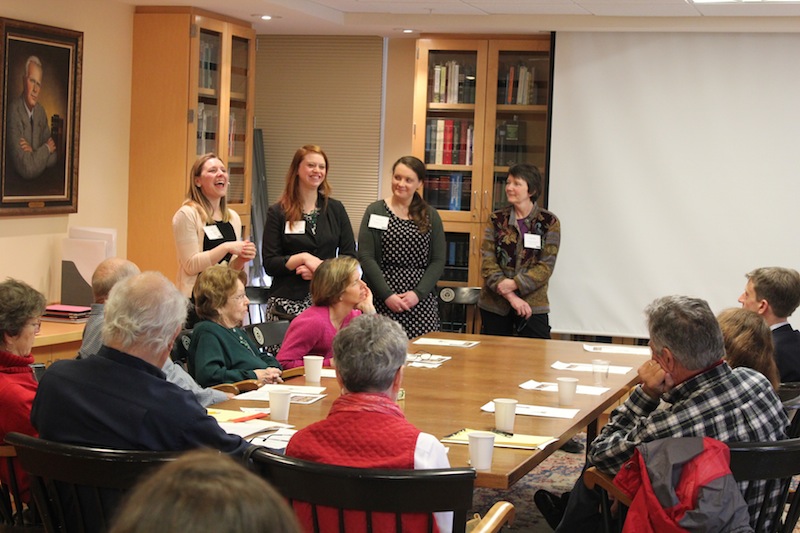
On Friday, Special Collections staff and a Bowdoin student offered alumni a showcase/workshop on Bowdoin’s Civil War archives.
The event, part of Bowdoin’s two-day commemoration of the end of the Civil War, was led by Meagan Doyle, project supervisor of the Oliver Otis Howard Papers Digitization Project; Caroline Moseley, Bowdoin archivist; Marieke Van Der Steenhoven, Special Collections and Archives assistant; and Nancy Walker ’15, a Bowdoin senior who had a fellowship to transcribe and annotate the journal and letters of Horatio Fox Smith, Class of 1865. Walker delved deep into the digitization movement by learning a text encoding language, and she began coding Smith’s writing for future online publication.
The two-hour event, in Hawthorne-Library’s Nixon Lounge, started with a talk about the Library’s considerable Civil War archive, and the library’s efforts to digitize much of its holdings. “It’s a push all over the country, all over the world, to put primary sources online,” Moseley said. “It is to improves access, and in some cases, it’s for preservation.”
Doyle touched on her work digitizing the Oliver Otis Howard Papers. Bowdoin last year received a $150,000 grant from the National Historical Publications and Records Commission’s “Digitizing Historical Records” program to support a three-year project to digitize the college’s Oliver Otis Howard Papers.
Howard, born in Leeds, Maine, a member of Bowdoin’s class of 1850, and a career army officer, was awarded the Medal of Honor for valor during the Civil War. Howard’s 1833-1912 papers represent a national treasure of research materials documenting America’s military, social, and cultural history throughout the latter half of the 19th century, including the Civil War, Reconstruction, Western expansion and Indian affairs, social welfare, domestic life, race relations, higher education and religiosity.
Van Der Steenhoven spoke about her work on the Bowdoin Civil War blog. The blog is compiled of letters, diary entries, notes and more, and gives us a window of what daily life was like 150 years ago. “Cumulatively, these entries provide a panoramic view of the lives, emotions, and occupations of the individuals who experienced a sometimes horrific, often mundane existence during the difficult year of 1863,” the site explains.
For the second half of the workshop, attention shifted from the digital realm to the physical. Van Der Steenhoven led this portion, which was a “hands-on workshop” to give participants a sense of working with primary materials. She first asked participants to wash their hands. Then she handed out sheets of yellowed papers, most covered in scrawling script. All were protected in thin plastic envelopes. Participants broke into pairs to first decipher the text, and then to figure out who wrote the document and for whom, and why. The also selected a particular passage that called to them, sharing it with the larger group.
One pair read a letter written by a young boy, Guy, to his father, Oliver Otis Howard, on April 8, 1865, the day before the Civil War came to an end. The letter describes small details of Guy’s day, such as watering his pony and going to the store to buy things for his Grandma, which he and a servant put in a wagon.
One of the lines in the letter concerned snow — snow in April in fact, something Mainers today can relate to. “The snow is most all gone here now,” Guy writes.
After the workshop, Candace Kanes, a curator and historian at the Maine Historical Society, gave a keynote talk titled, “From Slavery to Maine.”
